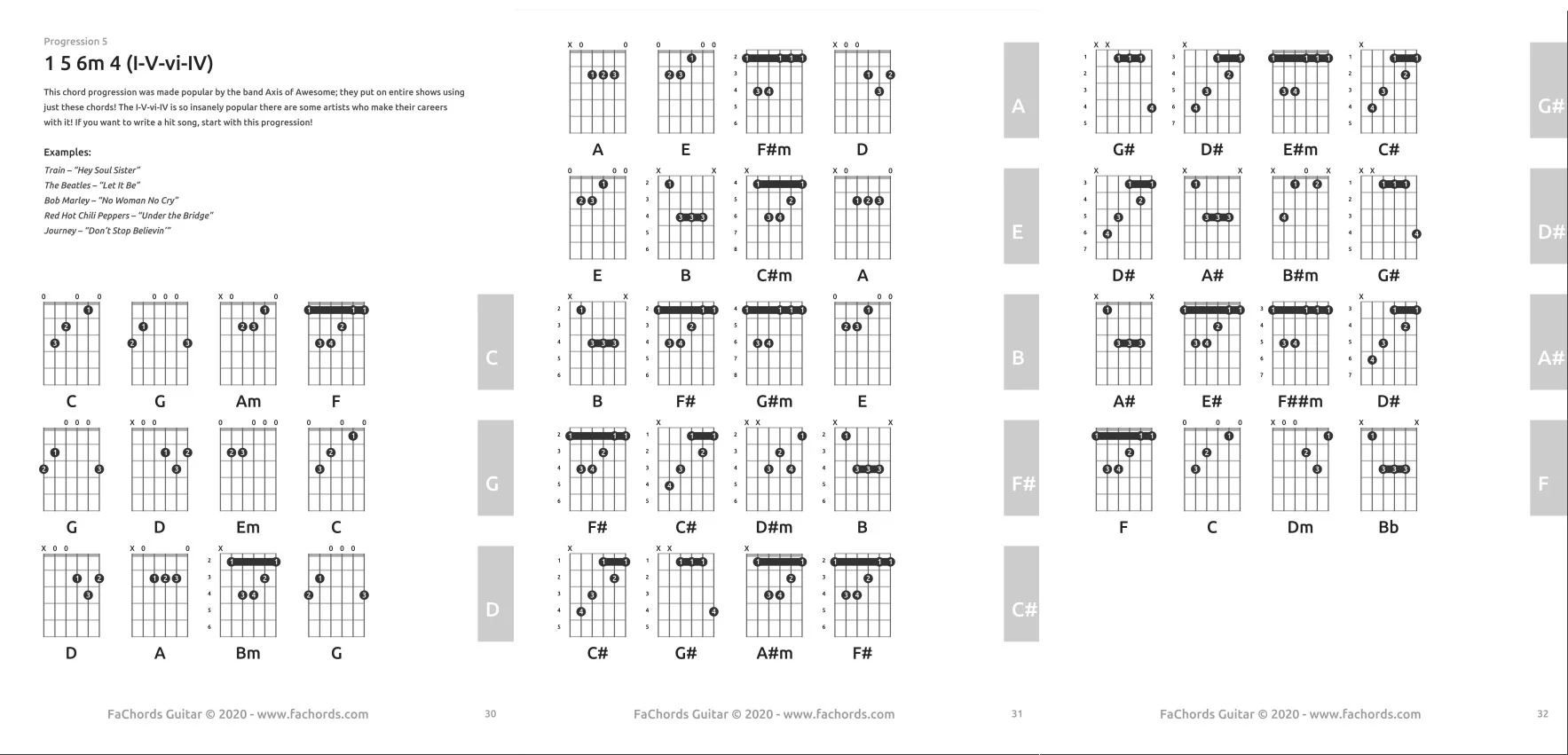The Four Chord Progression
The Most Famous Chords In Pop And Rock: 1 5 6 4
In this article we are going to take a look at one of the most common chord progression in modern popular rock and contemporary music.
It is such a common bunch of chords!
The are a lot of songs with the same chord progression .
I cannot even possibly list all the songs that use it in this article, bands like The Beatles, Journey, Elton John, Green Day, U2, Maroon 5 , and many Taylor Swift songs.
In the key of C this progression is:
C G Am F (1 5 6 4)
Go ahead and give it a play in open position.
Depending on the tempo and rhythm you are playing, you will find you can play hundreds of songs with just those four chords!
C Major

G Major
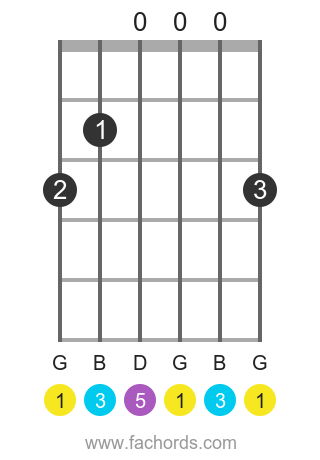
A Minor
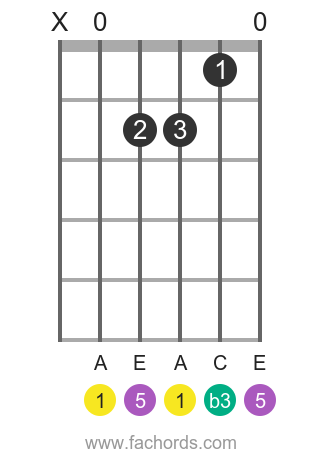
F Major

Most people who listen to music do not have a clue that so many songs are based around the same 4 chords.
The more songs you study and learn to play, you will see this progression over and over .
In fact you can impress your friends by playing as many different songs as possible with it.
Of course some songs only use this for a verse or chorus, and some use substitutions and other variations, but C-G-Am-F is a great place to start to understand how powerful chords can be when played in a particular order.
Axis Of Awesome
In the video above you can see the australian band The Axis of Awesome playing plenty of different songs with the same chords progression. And here is a page with a variety of songs using the above popular progression .
Turn your metronome on and see how many of these songs you can play with just C-G-Am-F.
Granted this chord progression will not give you every aspect of the song, but you will get better at realizing this fun and common thread between many popular songs and from there we can start building on this concept and advancing beyond such a common progression.
Ironically many musicians make a fortune off these 4 chords in that exact order, but as musicians and guitarists, we strive to continually advance our musical knowledge.
The Four Chord Progression in All Keys
Here below you find a chart with the chords for the Four Chord Progression in all the keys.
It's a great aid for practicing this popular chord sequence across all the fretboard.
This chart is a free excerpt from my complete ebook 52 Chord Progressions | Learn How To Connect Chords and Create Great Songs, a resource all about learning how to connecting chords.
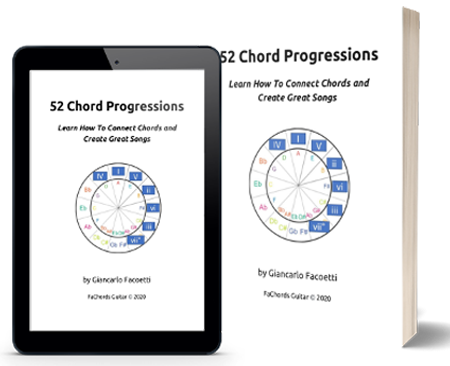
The ebook will show you 52 chord progressions, that are the foundation of many genres and styles of Western Music.
Why 52?
The idea is to use this ebook for 1 year, studying thoroughly a chord progression each week, in all keys and chord voicings.
Before you know it you will be picking out progressions from songs on the radio!
The Four Chord Progression in Roman Numbers
Roman Numbers are a way to denote chords progression that also include chord quality information.
Uppercase means major chord, while lowercase means minor.
So the Four Chord progression, in Roman Numbers would be written as:
I V vi IV
As you can see, this notation, like the Nashville Number method, does not include specific chord names but only their numbers: 1 (C), 5 (G), 6 (Am), 4 (F). Depending on the key in which you're playing the song, the numbers take different names.
The Reason Why These Chords Sound So Good Together
There are two main reasons why this chord sequence is so good.
First, it is strongly embedded in our DNA, because, as previously said, these chords are at the foundation of millions of popular songs.
It sounds familiar, so we like it, also at the unconscious level.
There is also a more theoretical explanation: the 1, 4, and 5 chords are constructed with the three most consonant intervals with respect to the tonic:
- I (1:1)
- IV (4:3)
- V (3:2)
But there's more: the IV and V chords are equally distant from the tonic, in opposite directions: one fifth above in the case of V (G) and one fifth below in the case of IV (F).
I IV V are also the chords in another popular progression, the three chord progression.
The remaining chord, vi, or 6, or Am in the key of C, is the relative minor of the tonic, and because of that is very pleasant as well.
You can easily visualize all these concepts with the help of the Circle Of Fifths:
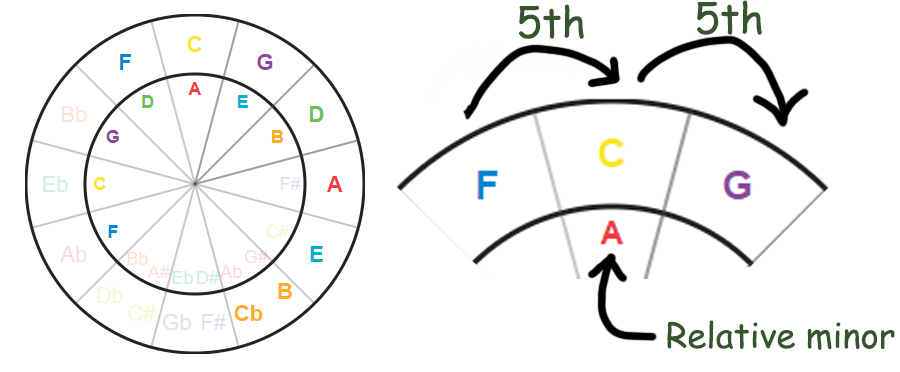
Building on The Four Chord Progression
As the Four chord progression is used and over-abused, sometimes you'll feel the need to add some variations in order to make it more interesting.
Here are several ways to improve things:
- You could use seventh, ninth and other chord extensions to improve the harmonic richness.
- You can apply chord substitution; for example, if you use the bVII borrowed chord trick to change the progression from C G Am F to C G Bb F (try it on your guitar!)
- You can even introduce secondary dominants. The diatonic dominant of the Four chord progression is on the
V degree (G in the key of C).
You could include the dominant of G, D7, to create nice effects.
That's all for today, try to use these chords to create the next pop hit! And don't forget to subscribe to stay updated and download the free resources.
